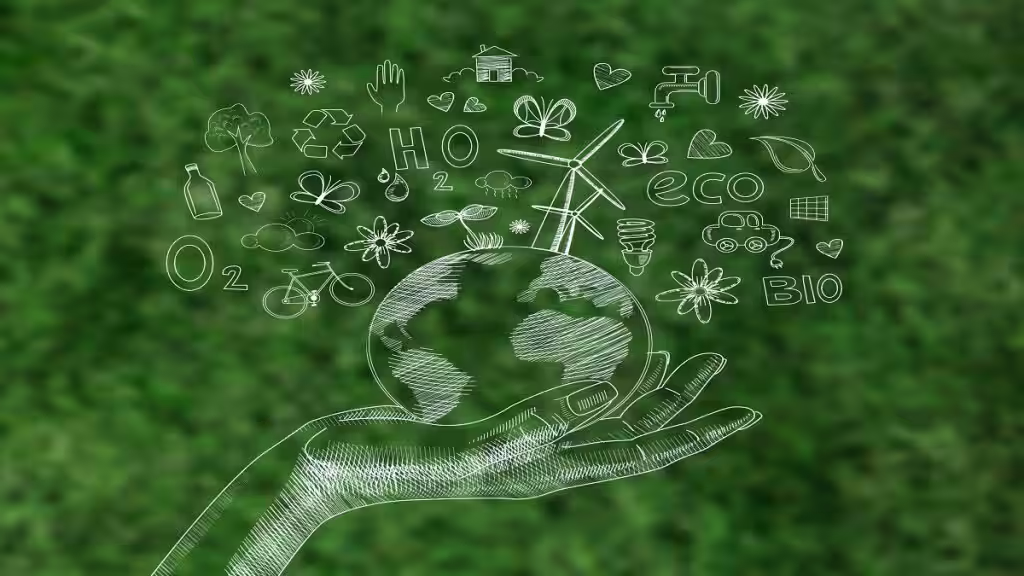The mounting concerns over climate change have catalyzed a collective awakening, urging nations, corporations, and individuals to reevaluate their environmental impact. As the world grapples with the urgent need to curb carbon emissions, India is emerging as a key player in the global effort to achieve net-zero emissions. India’s commitment to achieving carbon neutrality is echoing across all discussions; From the G20 Summit to the recent global leadership summit COP26, Prime Minister Narendra Modi pledged the nation’s resolve to achieve carbon neutrality and attain net zero emissions in India by the year 2070. The Prime Minister outlined a plan aiming to slash the country’s projected carbon emissions by 1 billion tonnes by 2030. Additionally, it intends to reduce its carbon emissions relative to its GDP by 45% from 2005 levels, surpassing the earlier targeted cut of 33-35% from the same baseline year.
In the pursuit of achieving India’s ambitious yet crucial goals, multifaceted strategies are employed. One significant avenue contributing to this vision is the integration of sustainable gadgets across various sectors. As one of the fastest-growing economies globally, India recognizes the urgency to adopt eco-friendly practices in its technological advancements to become carbon-neutral by 2070; particularly through its commitment to creating sustainable gadgets. India, as one of the world’s largest consumers of electronic devices, faces both challenges and opportunities in its journey towards net zero emissions.
Energy Efficiency and Renewable Power
Sustainable gadgets play a pivotal role in energy conservation and efficiency. The adoption of sustainable gadgets does not only go beyond reducing carbon footprints, it embodies a commitment to fostering innovation, empowering local economies, and safeguarding the planet for generations to come. Devices designed with energy-saving features significantly reduce power consumption, thereby lowering the overall demand for electricity. In a country like India, where power generation is still largely reliant on fossil fuels, this reduction directly contributes to curbing carbon emissions. Moreover, integrating renewable energy sources into gadgets themselves or through their usage can make a substantial impact. Global businesses are actively devising strategies aimed at producing eco-friendly gadgets, aligning with Indian government-led climate protection initiatives. Notable names like Apple, Sony, Samsung, and Electrolux Group are among those committed to supporting these endeavors. The 2023 MacBook from Apple, Samsung’s S23 Ultra in the Galaxy series, and Sony’s Linkbuds S are all technological gadgets crafted using recycled materials.
There is a surge in transparency regarding environmental impacts which is very evident in companies, advocating for eco-friendly operations to gain increased financial backing and higher valuations. Even investors in various startups are increasingly keen on understanding historical emission patterns and future estimations of carbon footprints, demonstrating a growing interest in businesses’ environmental accountability and sustainability efforts.
E-Waste Management and Circular Economy
India is facing a significant challenge in managing electronic waste (e-waste) due to rapid technological advancements and a high turnover of devices. In the fiscal year 2022, the country amassed an estimated 16,01,155.36 tonnes of e-waste, a revelation from the Ministry of Environment, Forest, and Climate Change’s response to the Rajya Sabha in February. Shockingly, only 33 percent, approximately 527,131.57 tonnes, underwent responsible collection, dismantling, and recycling. Consequently, a staggering 67 percent of India’s e-waste remains untreated and discarded, with a considerable part handled by the informal sector. This places India as the third-largest producer of e-waste globally, trailing behind China and the US, underscoring the enormity of the challenge faced.
To address this serious challenge, India implemented the E-Waste (Management) Rules, in 2022, replacing the previous regulations from 2010 & 2016, effective since April 1. Prior to this update, in July 2022, the Department of Consumer Affairs established a committee to develop a comprehensive framework for the Right to Repair. Inspired by Prime Minister Narendra Modi’s Lifestyle for Environment (LiFE) initiative, this framework encourages sustainable consumption practices. The Right to Repair empowers individuals to extend the life of their electronic devices, like phones and appliances, by accessing repair services offered by original manufacturers or third-party repairers. This shift advocates for repair as a sustainable alternative to frequent device replacements, ultimately addressing the surge in e-waste generation, a significant contributor to the escalating climate change crisis.
Another aim of this initiative is to monitor manufacturers to prevent non-competitive practices, which include banning third-party repairs, restricting the information they disclose about their products, and regulating who can conduct repairs on their products. Moreover, the adoption of a circular economy is key for India. Implementing a circular economy model, where gadgets are reused, refurbished, or recycled at the end of their life cycle, prevents the accumulation of e-waste while conserving resources. Initiatives promoting extended producer responsibility (EPR) compel manufacturers to take responsibility for their products, encouraging them to design devices with sustainable materials and recycling processes in mind. As manufacturers, it is their foremost duty to educate users and promote the responsible disposal of their used electronics. Encouraging users to hand over their unwanted items ensures they are properly recycled or reprocessed in an eco-friendly manner. Designing gadgets with modular components allows for easier repairs and upgrades, prolonging their lifespan and reducing the need for frequent replacements.
Education and Consumer Behavior
The adoption of sustainable gadgets goes beyond technological advancements; it requires a shift in consumer behavior and awareness. Education and awareness campaigns play a pivotal role in fostering a culture of responsible consumption. Encouraging consumers to make informed choices about purchasing energy-efficient and environmentally friendly gadgets can significantly impact the market demand and subsequently reduce carbon footprints.
In conclusion, the integration of sustainable gadgets in India’s technological landscape holds immense potential in realizing the nation’s net-zero emission mission by 2070. Embracing innovation, fostering a circular economy, and educating consumers are key pillars in this transformative journey towards a sustainable and eco-friendly future. As India harnesses the power of technology for sustainability, it paves the way for a global shift towards a greener, more sustainable world.


Recent Comments